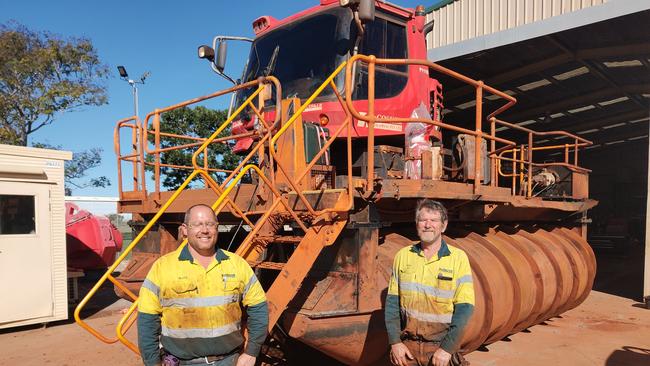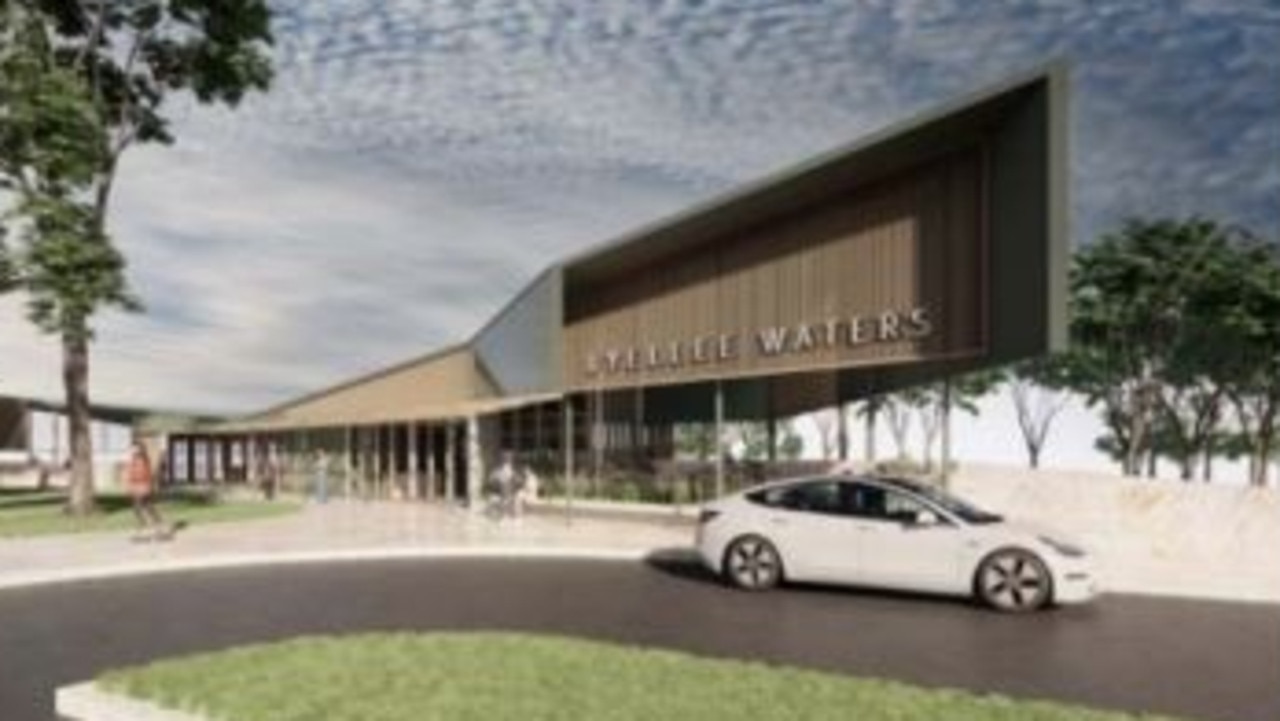Gladstone company’s ingenious invention breaks new ground
The seven, $1 million machines, were designed, engineered and built locally.

Business
Don't miss out on the headlines from Business. Followed categories will be added to My News.
INNOVATION and engineering prowess has been demonstrated by local company McCosker Contractors in the development of seven $1 million scrolling machines in a Gladstone shed.
General manager Danny Hughes said the machines, based around a snow ploughing piston bully, were designed, engineered and manufactured locally to construct and modify tailings dams for mining companies.
“We started with a Piston Bully snow plough that we were trialling as a replacement to a dozer, and we started pulling it apart to start the building of the scrollers,” he said.
“Then engineered the base first principles from scratch, with our own designers, and a bit of research and development.
“They are all GPS tracked now and on the latest ones we have cameras and the capacity to remote control them.
“The intent, which we are not too far away from at all, is to have them totally autonomous and remote controlled.”
The first of the amphibious, buoyant 15 to 20 tonne machines was chain driven, but all succeeding models have been propelled using a custom, locally derived, hydraulic system.
“We were repairing tailings dams and doing lifts (extending dam wall capacity) and one of our clients talked about farming and wanted to give farming a go of the tailings,” he said.
“We weren’t actively looking for the tailings farming but we had to address it if we wanted to do the bulk earthworks and other jobs we were chasing.
“We spoke to suppliers who had history in this stuff and they weren’t doing exactly what we wanted and didn’t have the same thoughts as us...so we thought we could give (building a machine) a crack.”
McCoskers then set to work on what was a huge task.
“Our scrollers are designed from scratch here in Gladstone by us internally,” Mr Hughes said.
“Our technology and what we are doing is unique and it’s new.”
The massive machines are used to construct and modify tailings dams for QAL and Rio Tinto.
“Our machines are totally amphibious, they can actually float and go anywhere on tailings dams,” he said.
“Theoretically you can’t bog them, which means you can go to places you couldn’t with conventional machines.
“It technically squeezes the water out of the mud and compacts it at the same time, so the water comes out of the tailings and then they compact.
“So by squeezing and compacting the tailings you increase the capacity and the life longevity of the dam, which is far more economically viable and longer lasting for the client.”
The practicalities for upstream tailings dam lifts, increasing existing dam capacities from the tailings, rather than the outside of the dam wall, are huge.
“They guys doing the lift can use the scrapers to build the wall while the operation keeps going which is far more economical and you get an increase in your dam capacity,” he said.
“On a tailings lift, you are not spending a huge amount more capital on a dam that may have already cost $20 million.”
Using the scrolling machines, McCoskers has completed contracts for QAL in Gladstone, and Rio Tinto at Yarwun and at Gove in the Northern Territory.
“Since we designed the first scroller we have been doing a lot of research and development and improving each machine,” Mr Hughes said.
“We built them as the demand came and the productivity gains of our scrollers, compared to what some of the others have had in the past, have been a significant increase.
“They are up to three times, we are told, faster and more productive.
“There are other techniques that can be used to increase the capacity of tailings dams, but I don’t know that they have seen the efficiency increases that McCosker’s have done.”


